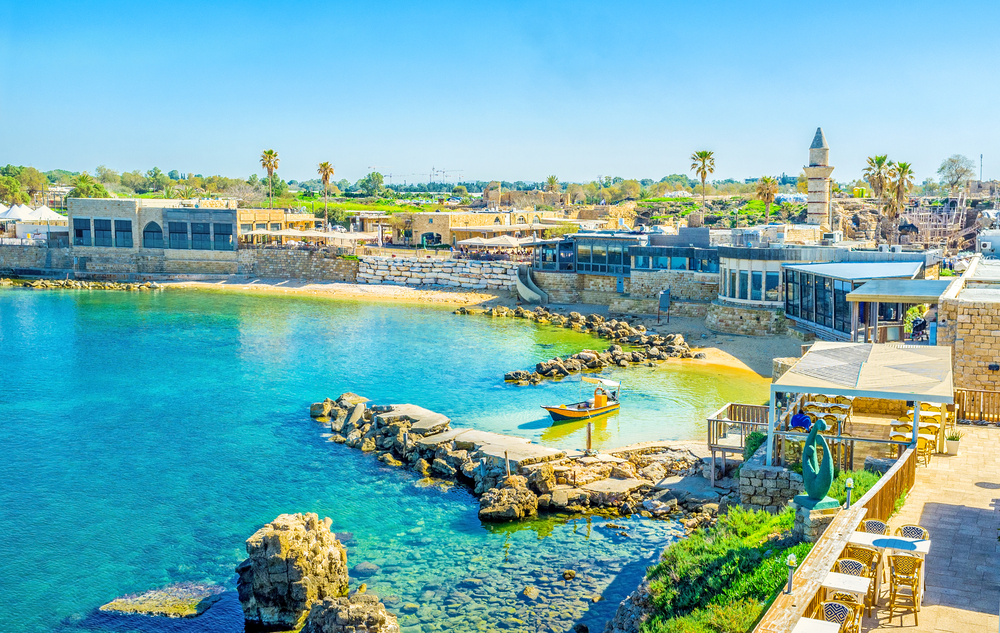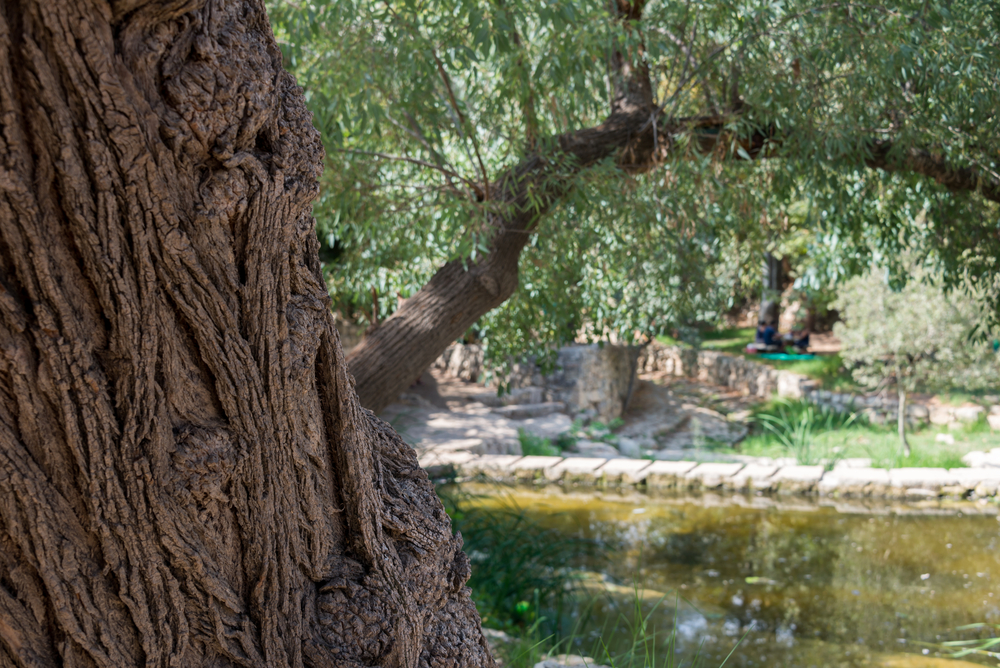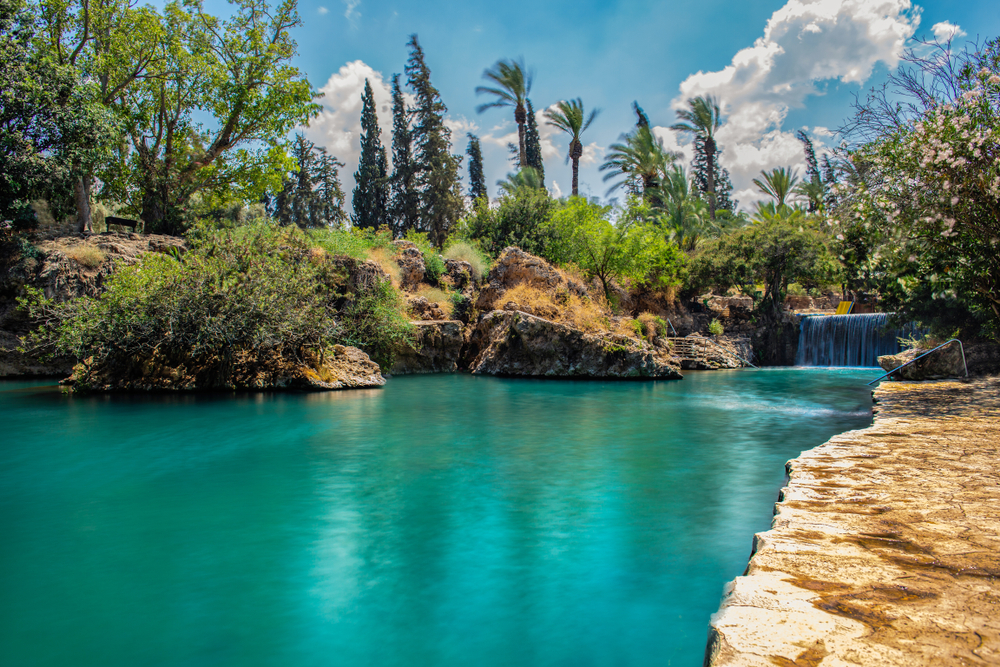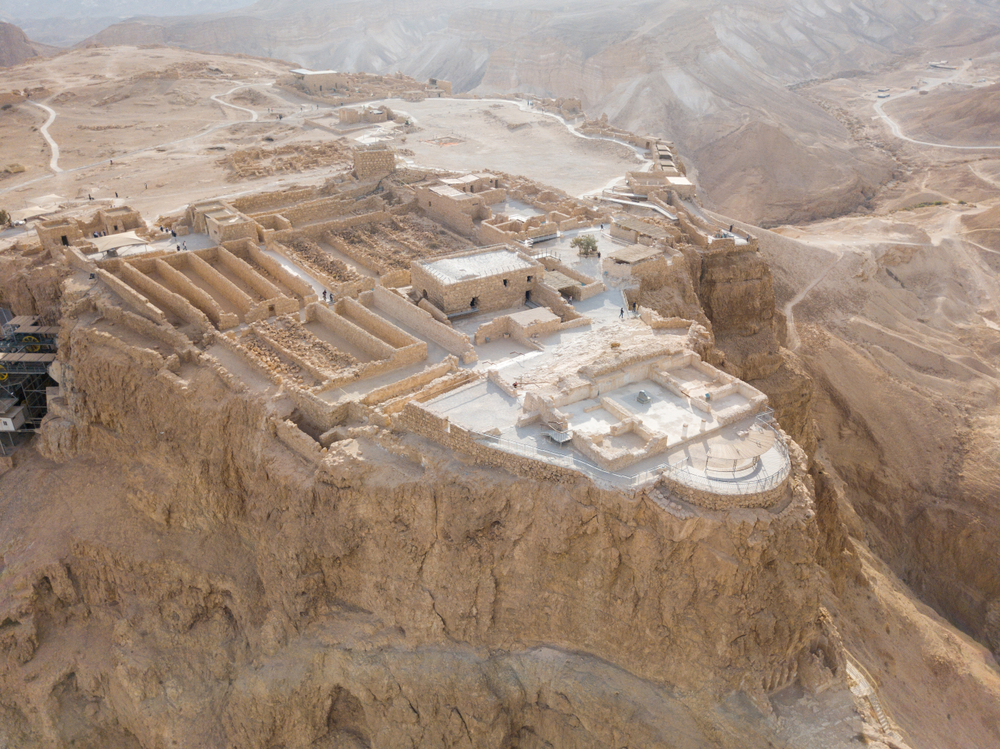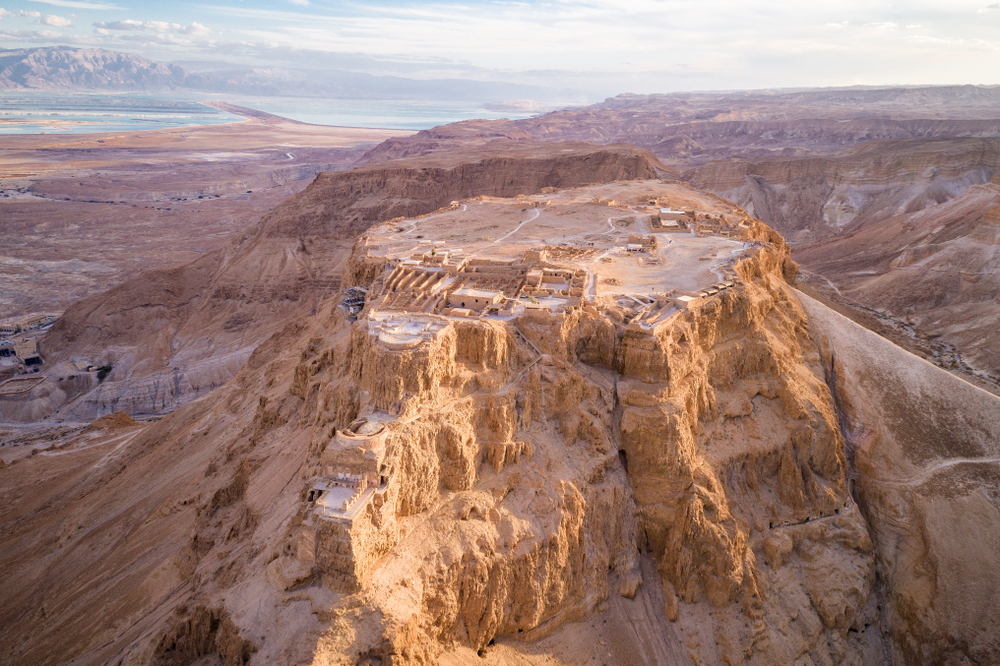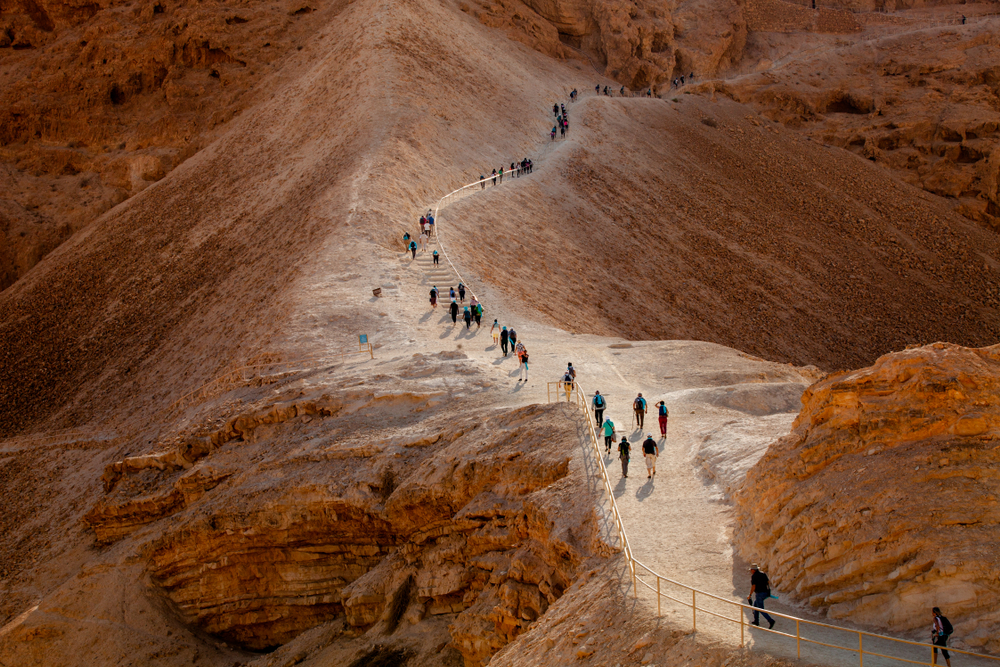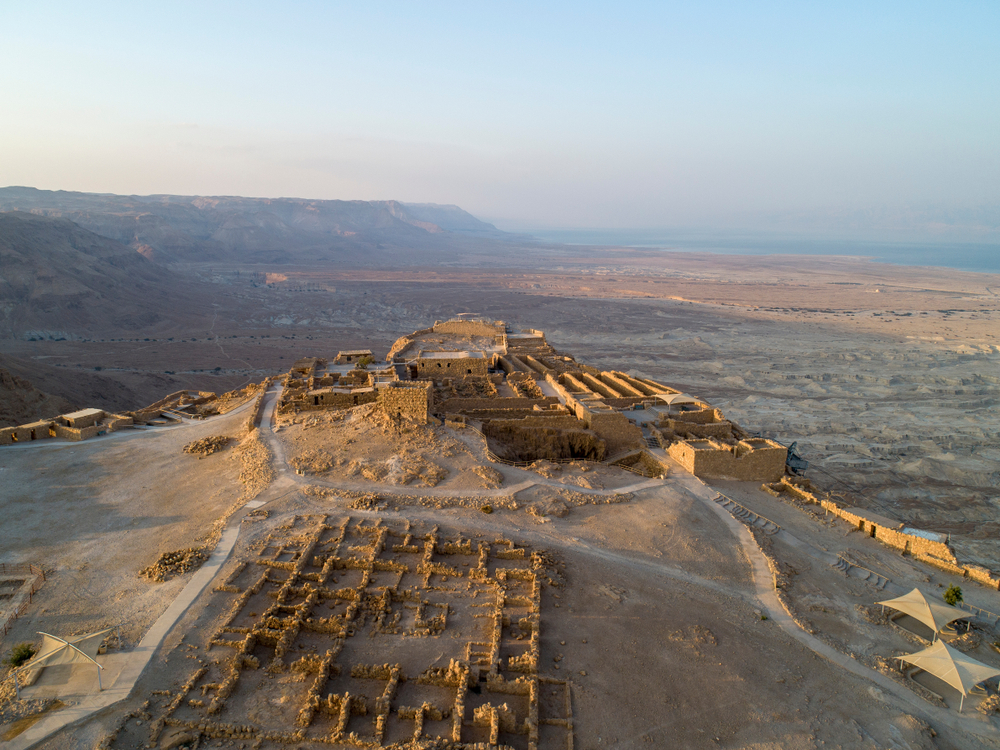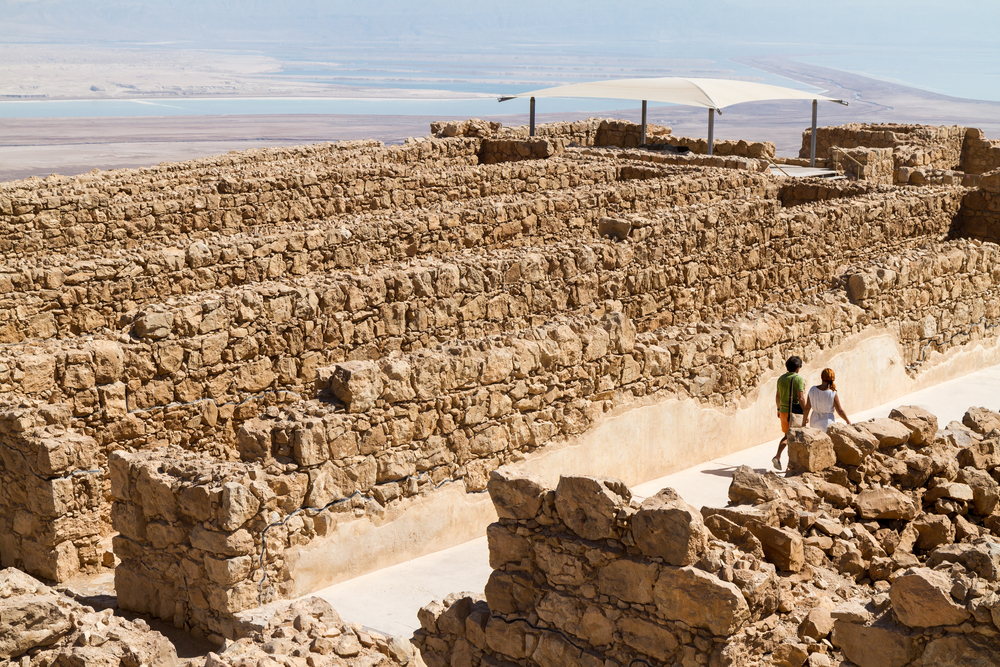Masada Overview
Masada National Park, located in the Judean Desert of Israel near the western shore of the Dead Sea, is a site of immense historical, cultural, and archaeological significance. This UNESCO World Heritage site encompasses an area of approximately 9 square kilometers (about 3.5 square miles) and is dominated by the ancient fortress of Masada, perched atop an isolated rock plateau overlooking the Dead Sea. Established as a national park in 1966, Masada symbolizes the ancient kingdom of Israel’s last stand against the Roman Empire in the 1st century CE.
The fortress of Masada, accessible by a winding path called the Snake Path or by a cable car, stands approximately 450 meters (1,476 feet) above the Dead Sea. It was originally constructed by King Herod the Great in the late 1st century BCE as a palace complex, serving both as a luxurious winter retreat and a fortified refuge. The site gained legendary status following the siege of Masada by Roman forces in 73-74 CE, where the Jewish Zealots chose mass suicide over surrender, becoming a symbol of perseverance, heroism, and the fight for freedom.
Masada National Park offers visitors a glimpse into ancient history through well-preserved remnants of Herod’s palaces, including the Northern Palace with its impressive terraces, the Western Palace, storerooms, and the large Roman-style bathhouse with beautifully preserved mosaic floors and frescoed walls. The park also features an intricate water system, highlighting the ingenuity of its inhabitants in harvesting rainwater in the arid desert.
The park’s visitors’ center provides educational exhibits on Masada’s history, archaeology, and natural surroundings. Hiking up the Snake Path to witness sunrise over the Dead Sea is a popular activity, offering breathtaking views and a moment of reflection on the historical significance of this ancient fortress.
Masada National Park serves as a poignant reminder of Jewish history and resilience, attracting visitors from around the world to marvel at its archaeological wonders and the dramatic landscape of the Judean Desert and the Dead Sea.
Park Map
Engaging Masada
Masada National Park Trails
Related National Parks More Israel
Sources
- Dead Sea, Masada National Park, https://www.deadsea.com/explore/historical-sites/archaeological-and-historical-sites/masada-national-park/, retrieved April 2024.
- Go TelAviv, Visit Masada National Park, https://www.go-telaviv.com/masada-national-park.html, retrieved April 2024.
- Israel Opera, Masada National park – A UNESCO World Heritage Site, http://www.israel-opera.co.il/eng/?CategoryID=479, retrieved April 2024.
- Parks Israel, Masada National Park, https://www.parks.org.il/en/reserve-park/masada-national-park/, retrieved April 2024.
- Tourist Israel, Masada Dead Sea, https://www.touristisrael.com/masada-dead-sea/848/, retrieved April 2024.










































































